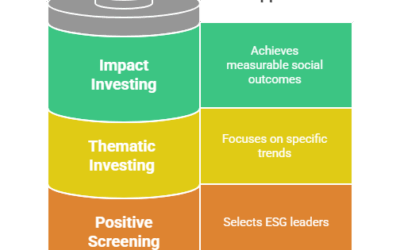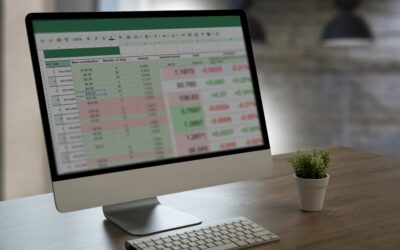The growing impact of climate change has introduced unprecedented challenges for financial institutions, investors, and policymakers. Climate risk assessment is rapidly evolving as a critical aspect of financial modeling, enabling businesses to quantify and mitigate potential financial losses associated with climate-related events.
Understanding Climate Risk
Climate risk refers to the financial and economic impacts of climate change. It is broadly categorized into two main types:
- Physical Risk – Direct damage to assets, supply chains, and infrastructure due to climate-related disasters (e.g., hurricanes, floods, droughts, wildfires).
- Transition Risk – Financial losses stemming from the transition to a low-carbon economy, including regulatory changes, technological shifts, and evolving market preferences.
The Importance of Climate Risk Assessment
- Regulatory Compliance: Governments and central banks are enforcing stricter regulations on climate-related disclosures.
- Investment Strategy: Investors require climate risk data to make informed portfolio decisions.
- Financial Stability: Assessing climate risks helps mitigate systemic financial disruptions.
Climate Risk in Financial Modeling
1. Traditional Financial Models and Their Limitations
Most conventional financial models do not incorporate climate risk factors, making them inadequate for assessing long-term sustainability. Traditional risk models focus on:
- Market risks (volatility, liquidity)
- Credit risks (default probabilities)
- Operational risks (business disruptions)
However, these models fail to capture the evolving risks posed by climate change, necessitating the integration of new methodologies.
2. Climate-Integrated Financial Models
To account for climate risks, financial institutions are incorporating:
- Scenario Analysis: Examining different climate-related future scenarios (e.g., extreme weather events, carbon tax policies).
- Stress Testing: Assessing how climate shocks impact asset values and financial stability.
- Machine Learning & AI: Using big data to predict climate-related financial impacts.
3. Key Financial Metrics in Climate Risk Assessment
Some essential metrics for climate risk modeling include:
- Value at Risk (VaR): Estimating potential financial losses due to climate change.
- Carbon Footprint Analysis: Measuring a company’s carbon emissions exposure.
- Stranded Asset Risk: Evaluating the risk of fossil fuel assets becoming obsolete due to energy transitions.
Climate Risk Disclosure and Regulations
1. Global Regulatory Frameworks
Regulators worldwide are pushing for greater climate risk transparency. Some key initiatives include:
- Task Force on Climate-related Financial Disclosures (TCFD) – Sets guidelines for voluntary climate risk disclosures.
- EU Sustainable Finance Disclosure Regulation (SFDR) – Requires asset managers to disclose climate-related financial risks.
- U.S. SEC Climate Risk Disclosure Rules – Proposes mandatory climate risk reporting for publicly traded companies.
2. Corporate Climate Risk Reporting
Companies are increasingly required to:
- Assess climate risks in financial statements.
- Report on climate resilience strategies.
- Disclose carbon emissions and sustainability goals.
The Role of Climate Risk in Financial Decision-Making
Climate risk is no longer a niche consideration—it has become a central component of financial risk management, influencing capital allocation, lending practices, insurance underwriting, and long-term investment strategies. Financial institutions, asset managers, and corporations must incorporate climate risk into their decision-making frameworks to ensure resilience in an increasingly uncertain world.
1. Climate Risk and Investment Portfolios
Institutional investors, pension funds, and asset managers are increasingly factoring climate risk into their portfolio strategies. Climate change can impact asset values in multiple ways:
- Sector-Specific Risks: Industries reliant on fossil fuels, such as oil, gas, and coal, face regulatory and market-driven challenges as the world transitions to cleaner energy sources.
- Geographical Exposure: Real estate and infrastructure investments in coastal or wildfire-prone areas are at heightened risk of devaluation due to extreme weather events.
- Long-Term Sustainability Metrics: Investors assess companies based on their carbon footprint, ESG performance, and ability to adapt to regulatory changes related to climate policy.
Many investors are shifting toward climate-conscious investment strategies, such as:
- ESG Integration: Embedding environmental, social, and governance (ESG) factors into traditional financial analysis.
- Thematic Investing: Focusing on industries benefiting from climate transition, such as renewable energy and electric vehicles.
- Exclusionary Screening: Divesting from high-carbon assets and redirecting capital to sustainable alternatives.
2. Climate Risk and Corporate Financial Planning
For corporations, climate risk assessment is critical for financial planning, risk mitigation, and long-term strategy. Businesses that proactively address climate risks can avoid regulatory penalties, build stronger brand reputations, and secure financing under favorable conditions. Key considerations include:
- Supply Chain Resilience: Businesses must assess the vulnerability of suppliers and distribution networks to climate-related disruptions. For instance, companies reliant on agricultural commodities face increased risks due to droughts and temperature changes.
- Capital Expenditures & Infrastructure: Companies investing in new facilities or operational expansions must evaluate climate risks to avoid stranded assets or infrastructure damage from extreme weather.
- Cost of Capital: Investors and lenders are placing greater scrutiny on corporate climate risk exposures, potentially increasing financing costs for firms with high climate-related vulnerabilities.
3. The Role of Banks and Financial Institutions
Banks play a crucial role in shaping the financial landscape for climate risk. As lenders, they are exposed to climate risks through their loan portfolios, particularly in industries such as energy, manufacturing, and real estate. Banks must:
- Conduct climate stress testing to evaluate how extreme weather events or regulatory shifts impact their lending portfolios.
- Adjust credit risk models to incorporate climate-related factors, such as carbon pricing policies.
- Develop green financing solutions, such as sustainability-linked loans, to support businesses in transitioning to low-carbon operations.
Central banks and regulators worldwide are also pushing financial institutions to integrate climate risk into their risk management frameworks. The Network for Greening the Financial System (NGFS), an alliance of central banks, is working to align global financial systems with climate goals.
Integrating Climate Data into Financial Modeling
Financial modeling has traditionally relied on historical data and economic projections, but climate change introduces non-linear risks that require new modeling approaches. Incorporating climate data into financial risk assessment presents both challenges and opportunities.
1. Climate Scenario Analysis in Finance
Scenario analysis is a powerful tool for assessing climate risk by evaluating multiple potential futures based on different climate and policy pathways. The Intergovernmental Panel on Climate Change (IPCC) and financial institutions use various scenarios, including:
- Business-as-Usual (BAU): Continued reliance on fossil fuels, leading to high emissions and severe climate impacts.
- Net-Zero by 2050: Aggressive decarbonization policies, increased investment in renewable energy, and rapid decline in carbon-intensive industries.
- Delayed Transition: A slower shift to a low-carbon economy, increasing risks for industries unprepared for sudden regulatory changes.
Financial institutions use these scenarios to estimate asset valuations, assess credit risk, and develop risk-mitigation strategies.
2. Quantitative Modeling Techniques for Climate Risk
Traditional financial models, such as discounted cash flow (DCF) analysis and Monte Carlo simulations, must be adapted to incorporate climate risks. Emerging techniques include:
- Integrated Assessment Models (IAMs): Combine economic, environmental, and policy factors to predict financial impacts of climate change.
- Machine Learning for Climate Analytics: AI-driven models can analyze large datasets to identify climate-related financial risks across industries.
- Spatial Risk Analysis: Uses geospatial data to assess climate exposure of physical assets, such as real estate and supply chain networks.
3. Climate Risk Metrics and Disclosure Standards
A standardized approach to climate risk disclosure is essential for ensuring transparency and comparability across financial markets. Key frameworks include:
- Task Force on Climate-related Financial Disclosures (TCFD): Provides guidelines for companies to disclose climate risks and governance practices.
- Sustainability Accounting Standards Board (SASB): Develops industry-specific reporting standards for ESG risks.
- EU Taxonomy for Sustainable Activities: Defines what constitutes environmentally sustainable investments.
Investors and financial regulators increasingly require companies to report on their climate risk exposures using these frameworks.
The Economics of Climate Change and Financial Markets
1. Carbon Pricing and Market Incentives
Carbon pricing mechanisms are shaping financial markets by attaching a cost to greenhouse gas emissions. The two primary methods are:
- Carbon Taxes: Governments impose a fixed price per ton of CO₂ emitted, incentivizing businesses to reduce emissions.
- Cap-and-Trade Systems: Companies receive emission allowances, which they can trade in carbon markets, creating financial incentives for emission reductions.
Financial institutions must account for carbon pricing when valuing assets and assessing credit risks for high-emission industries.
2. Green Bonds and Sustainable Finance
Sustainable finance is emerging as a powerful tool for climate risk mitigation. Financial markets have seen rapid growth in:
- Green Bonds: Debt instruments used to finance environmentally friendly projects, such as renewable energy and sustainable infrastructure.
- Sustainability-Linked Loans: Loans where interest rates are tied to a company’s sustainability performance.
- Climate Hedge Funds: Investment funds that specifically target climate-related opportunities and risks.
Global issuance of green bonds exceeded $500 billion in 2023, reflecting strong investor demand for climate-conscious financial products.
3. Insurance and Climate Risk Transfer Mechanisms
The insurance industry is at the forefront of climate risk mitigation, developing innovative financial instruments to transfer climate-related risks. Key strategies include:
- Parametric Insurance: Pays out based on predefined climate conditions (e.g., hurricane wind speeds) rather than traditional claims processes.
- Catastrophe Bonds: Investors assume financial risks from extreme weather events in exchange for higher returns.
- Reinsurance for Climate Risks: Insurers transfer parts of their climate exposure to global reinsurance markets.
As climate risks intensify, insurers are raising premiums and revising coverage terms, affecting businesses and property owners worldwide.
The Geopolitical Impact of Climate Risk on Finance
1. Climate Risk and Global Economic Stability
Climate change is reshaping global economic stability, with financial institutions and governments grappling with:
- Disruptions to Global Trade: Rising sea levels and extreme weather events threaten major trade routes and supply chains.
- Climate-Driven Migration: Economic displacement due to climate change is affecting labor markets and financial systems.
- Sovereign Credit Ratings: Countries vulnerable to climate risks may face downgrades in their credit ratings, increasing borrowing costs.
2. Government Policy and Climate Finance
Governments play a key role in shaping climate finance policies, with initiatives such as:
- The U.S. Inflation Reduction Act: Aims to accelerate clean energy investments and decarbonization efforts.
- The European Green Deal: Establishes a roadmap for a carbon-neutral economy by 2050.
- China’s Carbon Market: The world’s largest emissions trading system, impacting global carbon prices and financial flows.
Financial markets must navigate these evolving policy landscapes to align investment strategies with regulatory shifts.
Challenges in Climate Risk Assessment
Despite the progress, several challenges remain:
- Data Gaps and Inconsistencies
- Climate data is often incomplete or unreliable.
- Lack of standardized reporting makes comparisons difficult.
- Uncertainty in Climate Projections
- Climate models have inherent uncertainties, making risk predictions complex.
- Integration into Investment Decisions
- Financial institutions struggle to translate climate risks into actionable investment strategies.
Future of Climate Risk Assessment in Finance
The future of financial modeling will increasingly rely on climate considerations. Key trends include:
- Advancements in Climate Risk Analytics: AI-powered predictive models will enhance risk assessments.
- Regulatory Evolution: Stricter climate-related financial disclosures will become mandatory.
- Sustainable Investing Growth: Climate risk factors will drive ESG (Environmental, Social, and Governance) investing strategies.
Climate risk assessment is no longer optional—it is a fundamental component of modern financial modeling. As financial institutions, regulators, and investors recognize the financial implications of climate change, integrating climate risks into financial models will be crucial for long-term economic stability and sustainability.
Would you like me to expand on specific aspects, such as case studies, industry best practices, or climate risk assessment tools?





